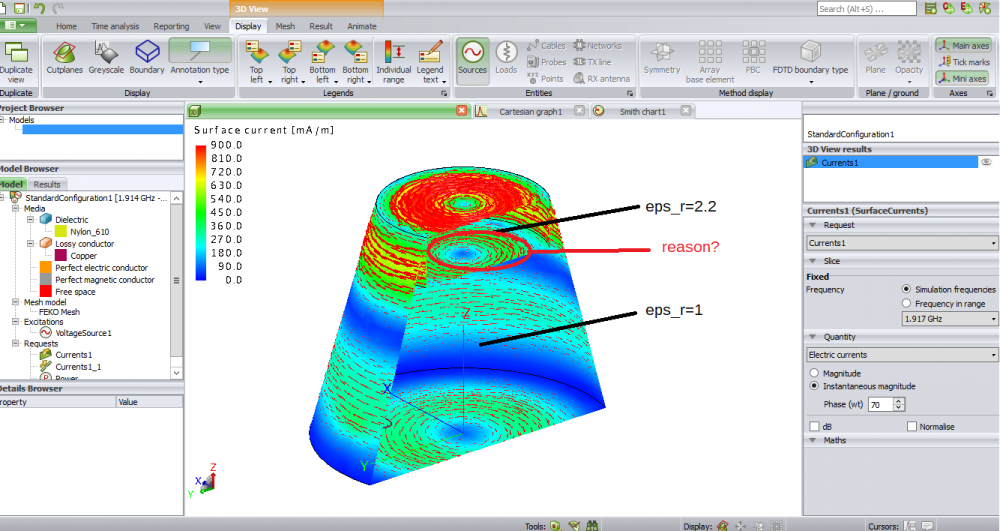I have noticed that FEKO (SE) shows surface currents at the boundary between different epsilon_r regions.
Could someone explain this effect please?
description in detail:
A dielectric plate is placed inside a conductive cavity resonator. There are two seperate regions inside with different dielectric constant (eps_r=eps_0 & eps_r=2.2). At the resonant frequency of a low order mode the surface current is displayed using postfeko. They are shown at the conductive walls, which is quite clear, but also at the dielectric boundary shell. Why is there a surface current present at this kind of boundery, a dielectric boundery? Is this some kind of:
1. displacement currens
2. manifestations of the ExH field on the surface at that position and because of the surface mesh at the boundery
3. based on the implementation of the BEM, MoM / boundery conditions
4. somewhat else
Thanks
<?xml version="1.0" encoding="UTF-8"?>